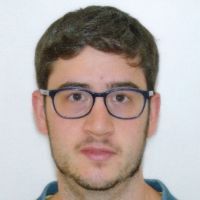Recent Advances in Free Electron Laser Accelerators
A special issue of Photonics (ISSN 2304-6732). This special issue belongs to the section "Lasers, Light Sources and Sensors".
Deadline for manuscript submissions: 20 July 2024 | Viewed by 402
Special Issue Editors
Interests: particle acceleration; electron beam dynamics; plasma-based radiation sources; plasma acceleration; linac-based free electron laser
Interests: beam physics; beam dynamics; coherent synchrotron radiation; free electron lasers
Interests: plasma-based acceleration; accelerator physics; laser-matter interaction; laser plasma interaction; nuclear fusion; plasma diagnostics; laser; plasma physics
Interests: engineering physics; electronic engineering; eccelerator physics
Interests: accelerator physics; free electron laser; laser dynamics; optics; lasers; field of radiofrequency systems; high-gradient RF accelerating structures; RF high-power sources; RF linear accelerators
Special Issue Information
Dear Colleagues,
Free electron laser (FEL) accelerators have revolutionized laser technology in recent years. Improved beam dynamics, control systems, and beam quality have enabled unprecedented control over coherent and tunable laser beams. This has opened up new frontiers in scientific research, allowing for enhanced studies in ultrafast processes, materials science, and biological structures. FEL accelerators also find applications in industrial sectors, offering high-precision and high-throughput capabilities for materials processing and advanced manufacturing. Next-generation FEL concepts, such as seeded FELs and energy recovery linacs, offer exciting possibilities for further advancements. These advancements will continue to drive scientific discoveries, industrial innovation, and medical advancements, making FEL accelerators an invaluable tool in various fields.
This Special Issue aims to showcase the latest advancements in the theoretical models, experimental results, and practical applications of FEL accelerators. All theoretical, numerical, and experimental papers are accepted. Topics include, but are not limited to, the following:
- Novel acceleration techniques for FELs;
- Advanced beam diagnostics for FEL accelerators;
- High-gradient structures and advanced acceleration schemes;
- Plasma-based free electron lasers;
- Cryogenic technologies and superconducting accelerators for FELs;
- Ultrafast FEL sources for time-resolved experiments;
- Next-generation FEL concepts and technologies;
- High-power and high-energy FEL accelerators;
- Beam dynamics and control in FEL accelerators;
- FEL technology for particle acceleration and collider applications;
- Applications of FEL accelerators in scientific research, industrial processing, and medical imaging.
Dr. Anna Giribono
Dr. Marcello Rossetti Conti
Dr. Francesco Filippi
Dr. Fabio Cardelli
Dr. Michele Opromolla
Guest Editors
Manuscript Submission Information
Manuscripts should be submitted online at www.mdpi.com by registering and logging in to this website. Once you are registered, click here to go to the submission form. Manuscripts can be submitted until the deadline. All submissions that pass pre-check are peer-reviewed. Accepted papers will be published continuously in the journal (as soon as accepted) and will be listed together on the special issue website. Research articles, review articles as well as short communications are invited. For planned papers, a title and short abstract (about 100 words) can be sent to the Editorial Office for announcement on this website.
Submitted manuscripts should not have been published previously, nor be under consideration for publication elsewhere (except conference proceedings papers). All manuscripts are thoroughly refereed through a single-blind peer-review process. A guide for authors and other relevant information for submission of manuscripts is available on the Instructions for Authors page. Photonics is an international peer-reviewed open access monthly journal published by MDPI.
Please visit the Instructions for Authors page before submitting a manuscript. The Article Processing Charge (APC) for publication in this open access journal is 2400 CHF (Swiss Francs). Submitted papers should be well formatted and use good English. Authors may use MDPI's English editing service prior to publication or during author revisions.
Keywords
- free electron laser (FEL)
- accelerator technology
- beam dynamics
- beam control
- acceleration techniques
- beam diagnostics
- coherent light source
- electron beam
- wavelength tunability
- ultrafast pulses
- X-ray free-electron laser (XFEL)
- laser-driven plasma acceleration
- energy recovery linac (ERL)
- superconducting radiofrequency (RF) cavities
- plasma-based accelerator
Planned Papers
The below list represents only planned manuscripts. Some of these manuscripts have not been received by the Editorial Office yet. Papers submitted to MDPI journals are subject to peer-review.
Title: Design of Machine Learning based algorithms for virtualized diagnostic on SPARC_LAB accelerator
Authors: Giulia Latini; Enrica Chiadroni; Andrea Mostacci; Valentina Martinelli; Beatrice Serenellini; Gilles Jacopo Silvi; Stefano Pioli
Affiliation: INFN - Frascati National Laboratories, Via Enrico Fermi, 54 - 00044 Frascati Rome/Italy;
Abstract: Machine Learning deals with creating algorithms capable of learning from the provided data. These systems have a wide range of applications and can also be a valuable tool for scientific research which in recent years has been focused on finding new diagnostic techniques for particle accelerator beams. In this context SPARC_LAB is positioned, a facility located at the Frascati National Laboratories of INFN, where the progress of beam diagnostics is one of the main developments of the entire project. With this in mind, you aim to present the design of two neural networks aimed at predicting the spot size of the electron beam of the plasma-based accelerator at SPARC_LAB, which powers an undulator for the generation of x-ray Free Electron Laser (XFEL). Data-driven algorithms use two different data preprocessing techniques, namely autoencoder neural network and PCA. With both approaches, the predicted measurements can be obtained with an acceptable margin of error and most importantly without activating the accelerator, thus saving time, even compared to a simulator that can produce the same result but much more slowly. The goal is to lay the groundwork for creating a digital twin of linac and conducting virtualized diagnostics using an innovative approach.
Title: Design and Test of a Klystron Intra-Pulse Phase Feedback System for Electron Linear Accelerators
Authors: Luca Piersanti; Marco Bellaveglia; Fabio Cardelli; Alessandro Gallo; Riccardo Magnanimi; Sergio Quaglia; Michele Scampati; Giorgio Scarselletta; Beatrice Serenellini; Simone Tocci
Affiliation: Istituto Nazionale di Fisica Nucleare; National Laboratory of Frascati
Abstract: Beam stability and timing jitter in modern linear accelerators is becoming increasingly important. In particular, if magnetic or RF compression regime is employed, the beam time of arrival jitter at the end of the linac can be strictly correlated to the phase noise of the accelerating fields of the RF structure working off-crest. For this reason since 2008 an RF fast feedback technique, that acts within each RF pulse, has been successfully employed at LNF in the SPARC_LAB facility on S-band (2856 MHz ) klystrons powered by PFN modulators, as reported in this paper. However, in order to meet the more stringent requirements of plasma wakefield acceleration schemes, some upgrades of this feedback system have been recently carried out. A first prototype has been experimentally tested on a C-band (5712 MHz ) klystron, driven by a solid-state modulator, in order to investigate the possibility for an additional improvement resulting from the inherently more stable power source. In this paper the design, realization and the preliminary measurement results obtained at SPARC_LAB after such upgrades will be reviewed.
Title: Characterisation and Optimisation of a C-band Photoinjector for Compact Light Sources
Authors: Giovanni Campri; Anna Giribono
Affiliation: /
Abstract: We performed an beam dynamics study of a C-band photoinjector for high charge electron beams. Such a device is capable of producing high brightness beams, with low energy spread and small transverse emittance, which are properties required by Free Electron Laser (FEL) and compact light sources in general. This work aimed to carry out, via numerical simulations, optimisation and benchmark results of the beam generated by such photoinjector, in the pursuit of its real application in the context of current projects, namely EuPRAXIA@SPARC\_LAB, and proposals such as BoCXS at the University of Bologna.









